If you work in construction, a factory or a warehouse you know that your feet will take a beating and that work boots are vital.
Why Wear Work Boots?
After all, equipment may be heavy and objects can be sharp. This can cause trauma to your feet if the correct footwear isn’t worn. During physical labour, our feet can take a pounding. Undoubtedly, you’ll need tough footwear relative to your industry and the hazards that present themselves within your role. Additionally, work boots must meet EN ISO 20345 regulations to ensure they are made to take the punishment of a tough job.
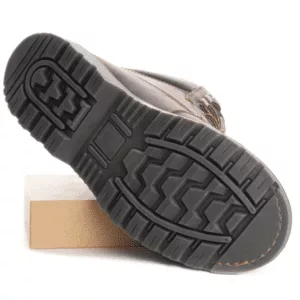
- Work boots are made with materials that resist impact, static, moisture and chemicals so they last longer than regular shoes.
- Work boots will often have soles that are slip-resistant and are made to stand up to impact.
You can find work boots in a range of styles, sizes and colours. Work boots are available with steel toes or composite toes depending on your needs.
Safety Boot Standards Set By EN ISO 20345:2011
EN ISO 20345:2011 is a safety footwear standard that was introduced in 2011. It supersedes EN ISO 20345:2007, which it replicates in most respects, but adds tests for heel energy absorption and several other criteria.
The full title of this standard is “Safety footwear – Part 1: General Requirements”. It is the European Standard for safety footwear and defines what constitutes a safe shoe or boot according to its performance in certain areas (such as abrasion resistance or penetration resistance).
The EN ISO 20345:2011 safety footwear standard has been written so that it can be applied across all sectors where people wear shoes at work; from agriculture through manufacturing and construction to health care services and beyond.
Safety Work Boot Ratings
All safety footwear in this standard is at least 200 Joule toe protection (SB)
| SB | |
| SB – P | P |
| S1 | A + FO + E |
| S1-P | A + FO + E + P |
| S2 | A + FO + E + WRU |
| S3 | A + FO + E + WRU + P |
| S4 | A + FO + E + Waterproof |
| S5 | A + FO + E + P + Waterproof |
Match the second column above with the descriptions to understand what each rating provides the wearer.

| Key | Description |
| A | Antistatic |
| C | Cut Resistant (Upper) |
| CI | Cold Insulation (Sole) |
| E | Energy Absorption (Heel) |
| FO | Fuel Resistant (Outsole) |
| HI | Heat Insulation (Sole) |
| HRO | Hot Contact Resistant (Outsole) |
| M | Metatarsal Protection |
| P | Penetration Resistant |
| WR | Water Resistant |
| WRU | Water Resistant (Upper) |
Standard SB Rating
Your toes are vulnerable to injury, so you should wear steel-toed boots or shoes that can withstand a 200-joule impact. SB outlines standard toe protection under 20345:2011 regulations. The toe area of a boot must withstand a resting mass of well over 1000kg. The impact force generated by something heavy falling from a low height could be less than that created by something lighter coming down from high up.
Antistatic Protection (A)
Employees who operate machinery are at risk of being shocked by static electricity. Often, they will wear rubber sole boots to reduce the amount of shock that occurs.
Electrostatic discharge footwear reduces the static discharge output drastically. This, therefore, prevents as much harm from coming to the individual conducting work. Under these regulations, electrostatic discharge shoes will incorporate toe protection into their footwear.
Work boots are among the essential pieces of protective equipment that an employee should wear. Especially when he or she needs to be protected, yet mobile, for example, while conducting a site assessment.
How Is Antistatic Measured?
In a dry atmosphere, the electrical resistance MUST range between 100 kiloohms and 1000 kiloohms. If the contact resistance falls below this range then they are considered conductive. If the contact resistance is set above this value then they are electrically insulating.
Anti-static boots work by helping to reduce the amount of static electricity that builds up on your body. They do this by expelling the electricity through the soles and into the ground. This offers a level of protection against ignition hazards such as flammable materials.
Cut Resistant (C)
These boots are cut-resistant and are ideal for those working around glass, sharp objects and recycling areas. In addition, they are also ideal for those working in the construction and manufacturing industries. Safety work boots are a vital part of any safety kit and it is important to choose the right boot for your needs.
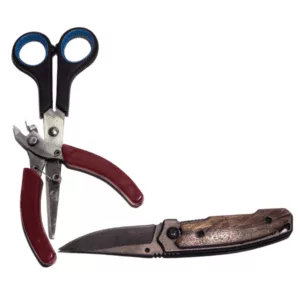
How Is Cut Resistance Measured?
Cut-resistant footwear shall have a protective area that reaches at least 30 mm past the feather edge and 10 mm beyond the rear end of your shoe’s toecap. In addition, protective material must be permanently attached to the footwear and there can be no gap between the toecap and the protective material.
Cold Insulation (CI)
What happens when feet get cold? When your feet are cold, they can’t function properly. You might feel uncomfortable or even painful and start to lose feeling in them. This can lead to awkward or dangerous situations, especially if you’re working with heavy machinery or doing something that requires quick reactions. You might not realise how cold your feet are until it’s too late. Wearing the wrong type of work boots can be dangerous, especially when temperatures drop below freezing. Here’s why we should all wear the right kind of work boots.
How Is Cold Insulation Measured?
When footwear is worn in accordance with ISO 20344:2011, cold insulation measures how warm these boots can keep your feet during the Winter months. A cold chamber is used as a simulation during the test. The cold chamber will reach –17°C. Once the chamber temperature has been set, the boot must withstand the cold and can only decrease a maximum of 10°C.
Energy Absorption (E)
You may need energy-absorption work boots if you work in a high-energy environment. Energy-absorption work boots are designed to reduce the impact of an accidental fall on your feet and ankles, which can help prevent injury In addition, some energy-absorption work boots feature a steel toe to protect them from impacts that might otherwise cause blunt force trauma. If you work with heavy machinery or equipment, you should consider purchasing energy-absorption boots that meet EN ISO 20345:2011.
How Is Energy Absorption Measured?
When constructing a safety work boot, the energy absorption of the seat/heel region shall not be less than 20J.
Fuel Resistant (FO)
The new standards have been updated and expanded to include additional safety features. The new standards now include a class rating system that allows users to select the appropriate boots for their specific needs.
Fuel-resistant boots are good for industries where the risk of fuel spillage is high. They can be used by workers in mining, construction, and other industries where there is a high risk of fuel spillage.
How Is Fuel Resistant Measured?
Fuel, oil and related solvents can cause the sole of a shoe to deteriorate.
EN ISO 20345:2011 outlines the first step for testing shoe soles. This allows one to determine, through subsequent testing and analysis, the extent of any swelling (volume increase) caused by exposure to fuel or other chemical liquids. An amounting volume increase greater than 12% is not allowed under this standard.
Heat Insulation (HI)
Heat insulation work boots are designed to keep your feet cool when exposed to extreme temperatures. They can also help protect your feet from the dangers of heat exhaustion, heat stroke and burns.
How Is Heat Insulation Measured?
When testing the heat insulation of a work boot sole, we often used a hotplate. This hotplate is set to 150°C and after 30 minutes, the upper surface insole should not be greater than 22°C.
Hot Contact Resistant (HRO)
The EN ISO 20345:2011 standard covers the requirements for safety footwear against hot contact. This standard was developed to protect workers from hot surfaces and other sources of heat while they are on-site, which can cause burns or blisters if not properly protected.
How Is Hot Contact Resistant Measured?
Rubber and polymeric outsoles must not melt or crack when subjected to bending around a specified mandrel.
Water Resistance (WR)
Rubbing, abrasions and blistering are all negatives to having a wet foot. The skin will become soft and delicate, however, this can be avoided with water-resistant footwear.
Waterproof boots are ideal for working in damp or wet conditions. Made of rubber, leather or canvas, these boots will typically have a waterproof membrane. This prevents water from seeping through.
Dryness is of course the core benefit, however, sloshing water inside your boot causes its own safety hazards. It’s uncomfortable, unclean and potentially ridden with bacteria.
Durability is another key benefit. As water doesn’t seep into the footwear, the work boot will last considerably longer. Puddles and low water levels will not affect this boot making them more desirable for companies looking to kit out their employees.
How is Water Resistance Measured?
The total wetted area inside the footwear shall be not greater than 3 cm2 when tested in accordance with either:
- After 100 trough lengths, or
- After 80 min of submersion
The depth of water should be greater than or equal to 5mm above the featherline, up to the top of the sole.
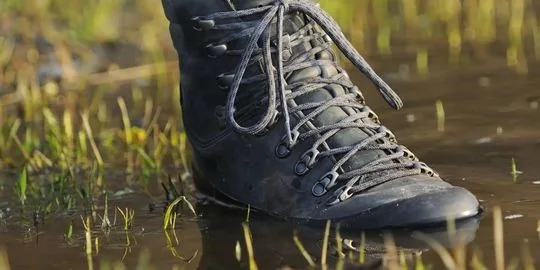
Work Boot Statistics
For many of us, work boots are something we don’t think about until they’re needed. But there are a variety of important factors to consider when choosing the right pair for your job. Also, the statistics may surprise you.
The good news is that we’ve got you covered. Keep reading to learn about the most common work boots and what makes them so great for different jobs.
A work boot is designed to protect the wearer when operating in hazardous industries. Work boots are required to be durable, sturdy, protective and long-lasting.
- Each year 50,000 employees are struck by a falling object.
- Each year 172,050 employees will slip, trip or fall.
Falling objects and slippy floors are among many hazards that occur frequently in a workplace. Generally, industries that suffer frequently from these hazards include construction, mining and maintenance jobs. Obviously, these sectors utilise more machinery and hazardous materials including oils or chemicals.
When purchasing safety work boots, there are a few things that you need to understand. Hopefully, this blog will help you to better choose your boots.
What Are Steel Toe Cap Boots?
Steel toe cap boots are the most heavy-duty option for safety boots, offering the highest protection levels. They are not only impact-resistant but also provide excellent protection for toes when working in the industry. Steel toe caps can be worn comfortably for long periods of time and are suitable for all kinds of work environments. Especially used in construction sites and DIY projects.
Designed to prevent foot injuries, steel-toe cap boots are used in a wide variety of working environments. As mentioned previously, 50,000 UK employees are injured each year from falling objects. Steel-toe boots could reduce this number and protect feet from falling or heavy object injuries.
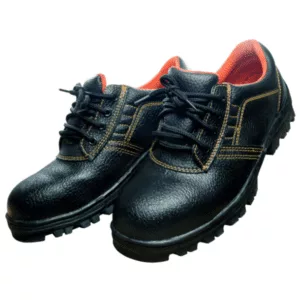
Durable, comfortable and reliable, steel-toe boots often feature more benefits than just toe protection. In general, these boots may also offer slip resistance, cut resistance, puncture resistance and heat protection.
Chance of injury or damage to your feet from falling objects? We can provide work boots that will provide protection at a low cost to the end user.
What Are Composite Boots?
Composite toe boots are fast becoming the standard for foot protection. Firstly, composite refers to non-metal materials such as plastic, fibreglass or carbon fibre. Steel-toe cap boots aren’t as effective in extremely cold conditions. Unlike composite materials, the steel toe will conduct cold and be uncomfortable for the wearer. Additionally, steel conducts electricity where composite does not.
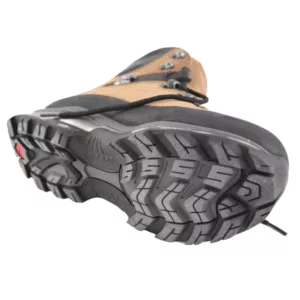
- Steel isn’t as bulky, however, they are slightly heavier than composite.
- Steel is often cheaper than composite.
- Composite provides thermal insulation and prevents electrical sparking.
Composite boots are made from a composite material that is light weight and abrasion-resistant. The toe box is reinforced with an alloy guard to protect the foot. This boot has a met guard that can be removed if the user prefers. The soles of these boots are designed to be non-slip and to reduce shock in the feet.
What Are Non-Slip Boots?
Reduce accidents by implementing non-slip boots into your workplace. These boots are a practical choice for workers who need traction and stability in their footwear.
Ideal for construction, manufacturing, restaurants and more. You should wear these where the risk of slipping is high. The service industry requires lots of standing and walking on hard, slippy surfaces. Non-slip boots utilise rubber outsoles with specialised non-slip grips.
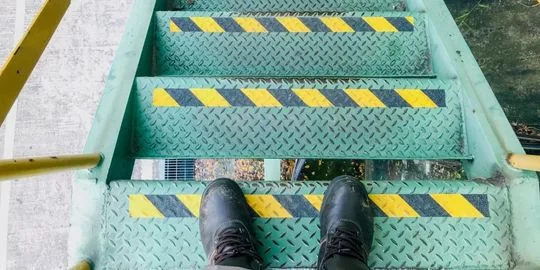
Conclusion
This is just a short guide to what you need to look out for when buying boots with steel toe caps. If you have any questions about any aspect of safety footwear, please don’t hesitate to get in touch with us! We’ll be happy to answer any queries or help with ordering.